Keep reading on! This article will help you with:
- The importance of coolant to your radiator
- Type of antifreeze can be used for your car
- How often & how to add coolant to radiator by yourself
Read more: Can You Mix Red And Green Antifreeze?
Why should it be coolant?
What can water cause to your car’s engine?
Over the years, people have learned that using water alone is not the best for cooling car engines. If you have been stranded and cannot get water to cool off your car engine on a sunny day, you’ll understand.
Evidently, cars are made of metal. However, corrosion can occur when the radiator overheats. Corrosion refers to the chemical process that involves the car metals returning to their original state. It means that the metals degrade until they reach their original oxide, hydroxide, or sulfide state.
If you use only water for your radiator, your engine may begin to collect mineral particles. These particles can damage your engine in the long run.
You will also see why you need to apply the right ingredients to keep your engine at the right temperature.
In hot weather
Let’s say what you have in your radiator is only water. Typically, water boils at 212° Fahrenheit (100° Celsius). When the temperature gets to that point, the water in the radiator may begin to boil. However, when you apply an equal amount of antifreeze – a liquid made up of ethylene glycol, diethylene glycol, or propylene glycol – it helps extend the water’s boiling point from 212° Fahrenheit to 223° Fahrenheit (106° Celsius).
On hot days, your car and the temperature of the surroundings is usually increased. It tends to boil the water in your radiator (if you use water). Therefore, it can reach an evaporation level faster. When this happens, your car begins to malfunction, and if unchecked, it can destroy your vehicle.
The coolant in your car engine helps to increase the boiling point to about 223° Fahrenheit. It means that the coolant will always remain liquid and effective cooling is possible this way.
In cold weather
If you find yourself in a zone where the temperature is low and drive your car in such a condition, freezing usually happens. In that case, the water in the radiator is at the risk of getting frozen. If it happens, it will only cause grave damages to your radiator. These damages can include cracked head gasket, or even blowing it. They also will threaten your vehicle engine with knocking.
Let’s see what coolant can help your radiator here: Water freezes at 32° Fahrenheit (0° Celsius). The antifreeze will help lower the water’s freezing point to a negative 35° Fahrenheit (negative 37° Celsius). With an antifreeze, your engine’s cooling system isn’t at risk of being cracked by frozen water anymore. It also lubricates the system, and there is no means for freezing to occur at that point.
The importance of coolant to the radiator
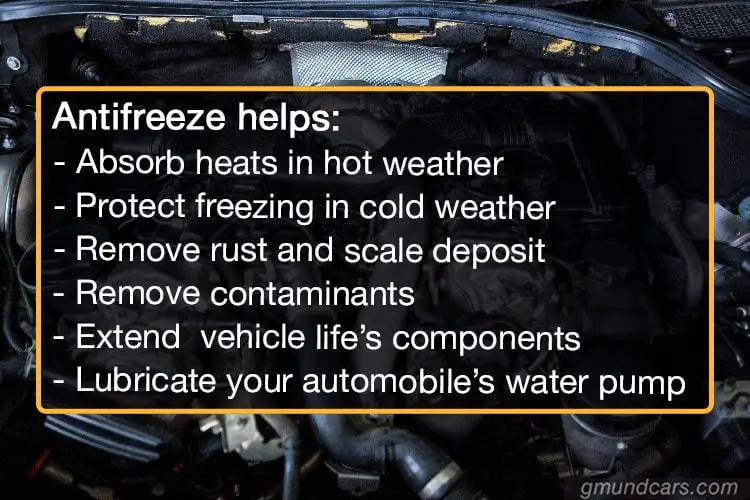
The exhaust and your cooling system work together to keep your engine cool. The coolant absorbs the heat generated by your engine and prevents the fluid flowing in the machine from boiling.
The occurrence of boiling engine water is prevalent in hot weather or during summer. So with the coolant in place, such an event is reduced drastically. The antifreeze coolant is essential to your engine because it helps with the following:
Prevent corrosion and engine rust
Corrosion and engine rust occurs when there is an acidic reaction between oxygen and metal surfaces. This acidic reaction is prevalent in coolants. Because of this, manufacturers of add corrosion inhibitors to the coolants. This, in turn, leads to a decrease or elimination of corrosion or engine rust that might happen if water was used in the radiator.
Help extend vehicle component life
One of the functions of a coolant is that it helps extend the life of rubber and plastic components in the vehicle. The coolant absorbs the heat that can lead to the melting of the vehicle’s rubber and plastic components. In light of this, rest assured that the coolant will keep your vehicle’s rubber and plastic components in shape for a long time.
Absorb heat
It helps cool down the engine by reducing the temperature of the fluid. If this does not take place, the engine will surely overheat. And it can cause damage to the engine.
Read more: Engine Hot AC Off: What Does It Mean And How To Fix It?
Freeze protection
This is for those living in colder regions. The coolant prevents the fluid in the cooling systems from freezing up when the temperature goes too low. It keeps the water in a liquid state.
Water vs. Antifreeze: What is the best ratio for your engine?
It is common to see people use water as a cooling means. But certainly, you are now well-aware of the grave consequences caused by water in your radiator. When it comes to coolant, what is the ratio you need to achieve the desired outcome?
In normal climatic conditions, we recommend that you keep the ratio at 50:50. It is because the climate isn’t severe enough to form ice glaciers in the cooling system or, worse still, corrode it.
However, in severe conditions, the ratio should be 40:60 (40% distilled water, 60% antifreeze). If the condition is more severe such that the temperatures appear to be below 32° Fahrenheit (0° Celsius), you need a higher antifreeze concentration. Therefore, 40:60 is the ideal ratio.
Professional advice: you should always use distilled water.
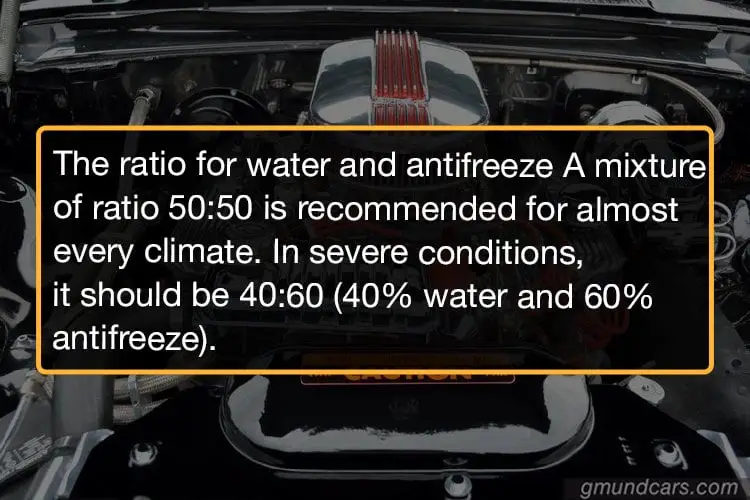
Precautions for use
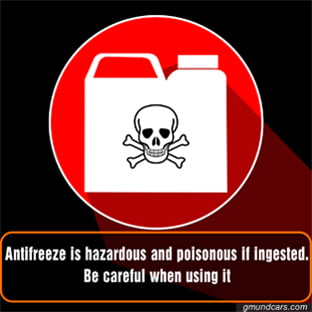
As a solution, antifreeze is dangerous for consumption by both humans and animals. An essential ingredient in antifreeze is ethylene glycol. This chemical is known to be highly toxic and attacks the body’s nervous system and kidneys.
The worst part of everything is that ethylene glycol has a sweet taste. Kids who stumble on it can drink to their fill. The same thing applies to animals.
For people who have taken antifreeze inadvertently, their feet become unsteady; they start to puke all over the place, they get thirsty a lot, and their urination frequency increases. Also, they lose their appetite and are faced with seizure episodes.
To prevent humans and animals from swallowing antifreeze, one has to keep the antifreeze out of the reach of unsuspecting humans and animals. If someone ingests antifreeze, the person must get medical help immediately.
How to check and add coolant to the radiator
You do not need the help of a professional before you can add a coolant to your radiator. You can do it yourself. There are steps you can take to add a coolant to your radiator.
Preparation
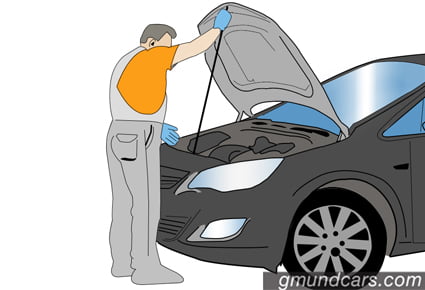
- To add coolant to the radiator, you need antifreeze, distilled water, funnel, gloves, bucket, and a rag.
- Ensure your engine is cool. It is why we always recommend that you do it early in the morning when your vehicle hasn’t undergone any form of activity. If your car was in use before, you could check its temperature by placing your hand over it. If it’s still hot, you can leave it for 30 minutes to cool down.
- Once your vehicle is cool, open the hood to reveal the radiator compartment.
Steps to follow
- Locate the radiator cap
The radiator cap is a pressurized cap. It is usually oval and easy to locate.
Note: Make sure the radiator is completely cool when opening the cap.
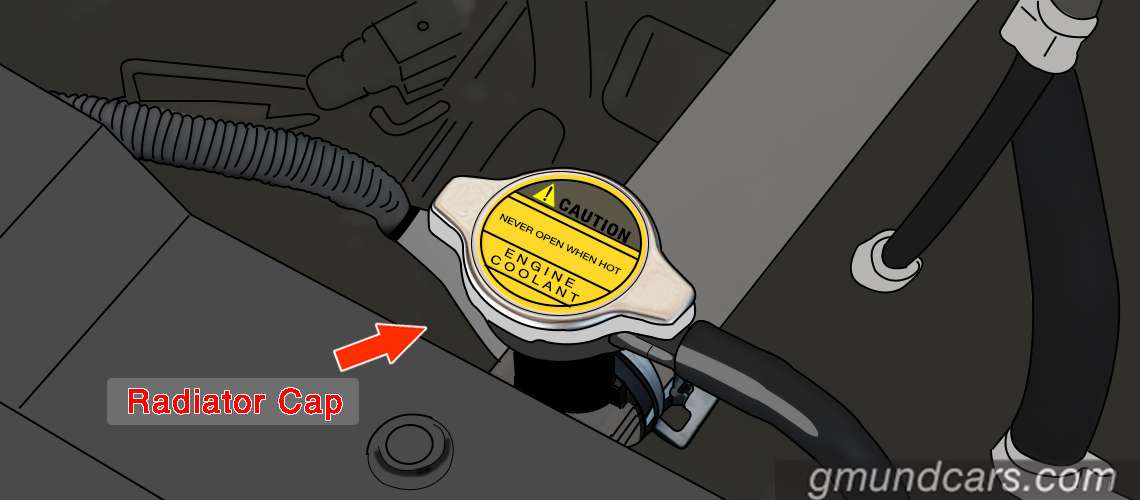
- Check the remaining coolant level inside your radiator
From the top of the radiator cap, follow the hose that comes from and leads to the reservoir. The coolant reservoir is usually clear-plastic. You can check the body to know the radiator fluid level by looking at the outside’s full and low indicators. If it is low, you need to top it up.
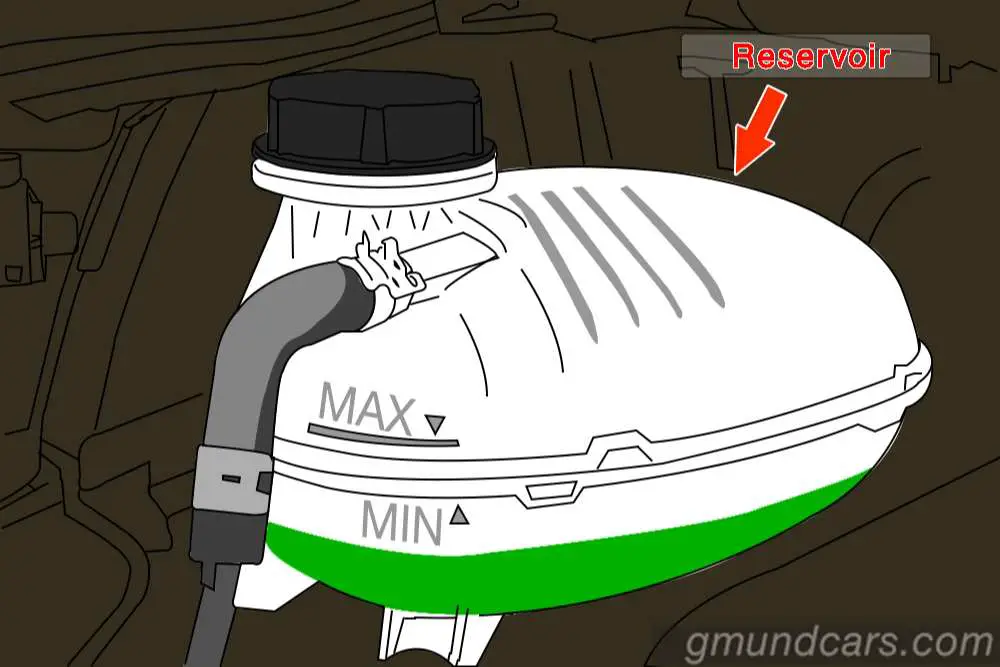
- Mix antifreeze with distilled water
You need to mix antifreeze with distilled water. The recommended ratio for normal conditions is 50:50. Put the funnel into the empty radiator tank to avoid spilling. Add distilled water halfway into an empty radiator tank. Afterward, add the antifreeze to fill the tank up. If there is an overspill, use a rag to clean the spill.
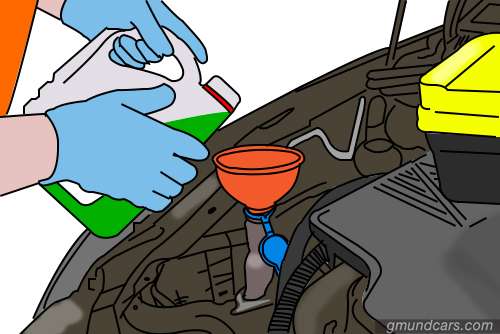
- Add the coolant to the radiator
Most vehicles have reservoirs. Therefore, we advise that you add the coolant to it rather than the radiator directly. Use the rag to open the reservoir cap then add the coolant to the reservoir. Fill coolant to the MAX line of the reservoir. The reservoir will move coolant to the radiator.
Note: Pour the solution into the reservoir if you have one. To some old cars, there is no reservoir, pour it directly into the radiator from the radiator cap.
Tip: You need to read your car’s manual again to know exactly how much coolant is needed in your vehicle.
- Test your car
After everything, start the engine to test your car. Also, check for any leaks. It isn’t a good thing to lose fluids due to leaks. If there are any leaks, contact your mechanic as soon as possible. If your vehicle’s coolant system dries up quickly, there may be a leak.
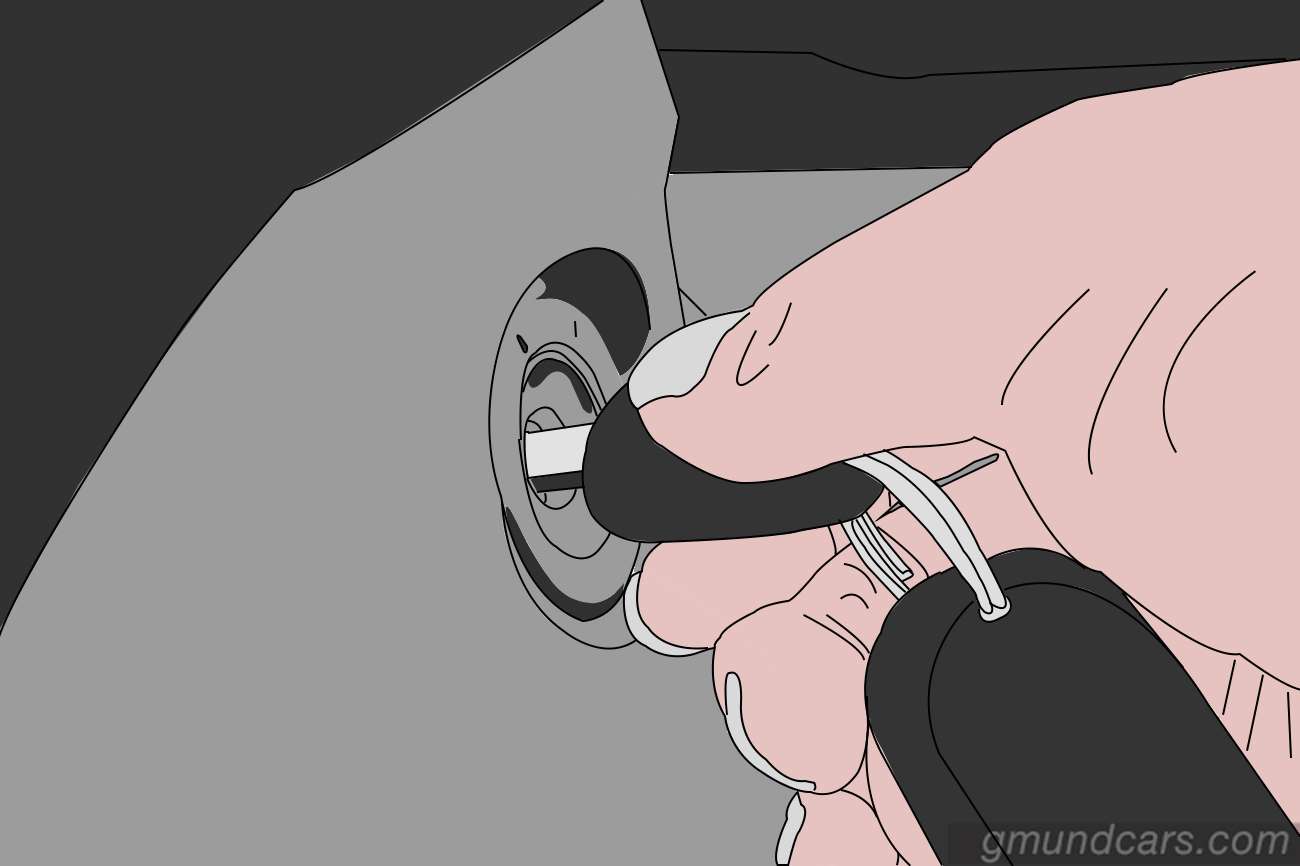
Types of antifreeze
Organic Acid Technology (OTA)
This type of antifreeze is made with organic acid technology. Whatever chemicals are in the liquid are removed. Also, it contains anti-corrosion to guard against rust. An organic antifreeze can last for up to 150,000 miles. Organic acid technology is available in dark green, orange, pink, blue, and red. This type of antifreeze is used for newer car models and does not contain silicates and phosphate. (typically used for Honda, Toyota, Nissan, Mitsubishi, GM, VW).
Inorganic Acid Technology (ITA)
It is manufactured with inorganic acid technology. Also, it contains ethylene glycol. Cars manufactured mostly in the 90s use ITA (GM, Ford, Chrysler). They are not particularly recommended for newer cars because they contain phosphates and silicates. These two chemicals cause corrosion in vehicles. Inorganic additive technology antifreeze is usually blue or bright green.
Hybrid Organic Acid Technology (HOAT)
It is a combination of OTA and ITA, and newer car models can use it. This type of antifreeze uses silicates as additives. With these silicates, the radiator is free from corrosion, and aluminum cannot rust. Its lifespan is five years or 150,000 miles. If it exceeds that, it needs to be expunged. Hybrid organic acid technology antifreeze is either orange or yellow. This type of antifreeze is commonly used by Major European, German, and Asian car manufacturers, Chrysler).
Universal antifreeze coolant
It is a type of coolant that does not need to be diluted before use. It already has a 50:50 ratio of antifreeze and demineralized water. The only con is that the silica content is low, and it cannot ward off corrosive agents from the radiator.
Tip: Although some antifreeze products are advertised to fit all cars, your vehicle has its specifications. It is advisable to check with your automobile’s manufacturer before you purchase any antifreeze.
How often should you check and top up coolant?
How often to check and top up coolant?
As a maintenance measure, you are expected to do a coolant check-up regularly. It depends on how often you drive your vehicle. The safest option is to check on and top up a fortnightly basis. Earlier, we advised that you should always check for leaks regularly. How often should you change coolant in the radiator?
How often to change coolant?
There is no specific time to change your coolant. However, if you have not changed your engine coolant for a while, there are increasing chances of your car overheating.
We advise that you check your coolant once your car hits 30,000 miles. It would help if you looked out for signs of rust and leaks. Also, you can measure your coolant’s acidity with a test strip.
For newer cars, we recommend that you change the engine coolant after ten years or 100,000 miles. For older cars, you can change after three to five years or 30,000 miles to 50,000 miles whichever comes first.
FAQs
Q: How long after adding coolant can I drive?
A: You can drive immediately as long as you have confirmed no leak or anything unusual. However, you need to run your engine after adding a coolant before moving the vehicle.
Q: Is it bad to drive a car with low coolant?
A: Yes, because it can lead to engine damage. Your vehicle’s engine can start to overheat, and vital parts of the machine will become hotter. The gasket will leak, and the coolant will flow into the engine system. Besides, corrosion will happen because the vehicle is low on coolants.
Q: How long does coolant last in a car?
A: If the coolant is silicate, it can last for two years or 30,000 miles. For extended drain coolant, it’ll last for five years or 100,000 miles.
Q: Can I use water instead of coolant in an emergency?
A: Yes, you can use water as coolant in that emergent circumstance, but don’t forget to flush and change it immediately by the next available moment.
Final thoughts
To preserve your vehicle’s longevity, you should not use just water for your vehicle’s radiator. Instead, it would help if you elected an antifreeze that’ll serve its purpose regardless of the weather condition. By now, you must have understood the dangers of consuming antifreeze.
More importantly, you have learned how easy it is to add antifreeze yourself. Furthermore, you know when to change your vehicle’s coolant. If you love your car, please don’t use water instead of coolant.
Read more: Coolant Boiling in Reservoir: The Causes and How to Fix It